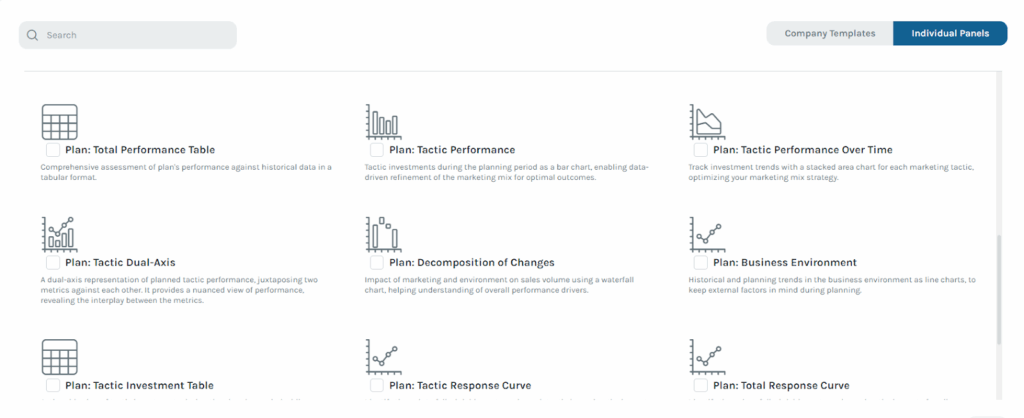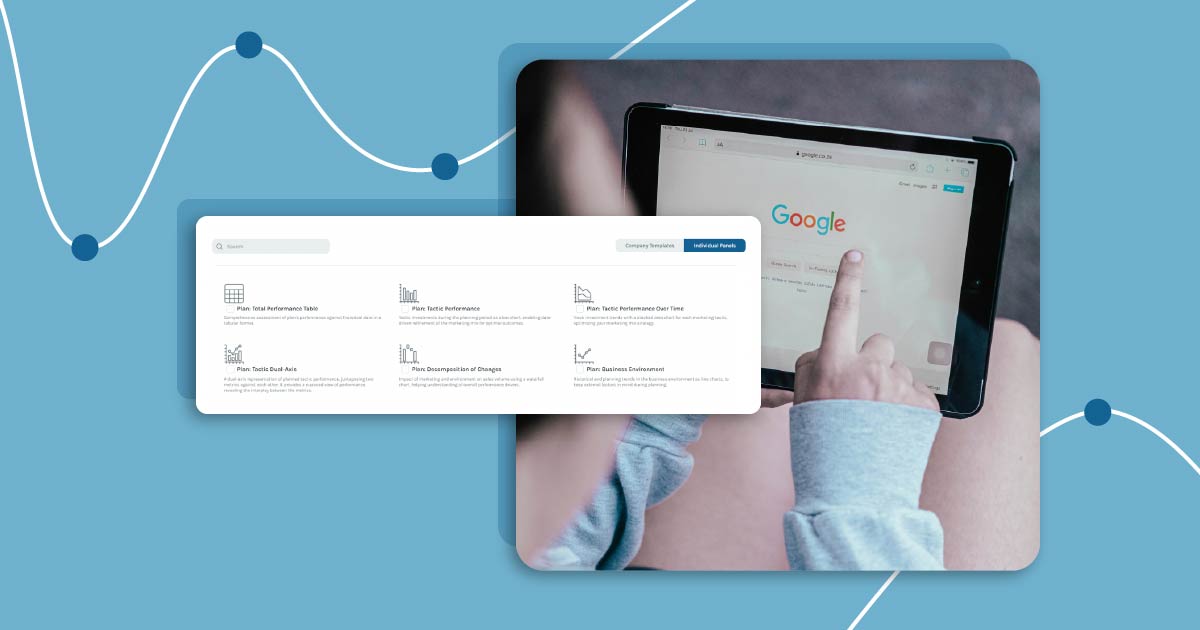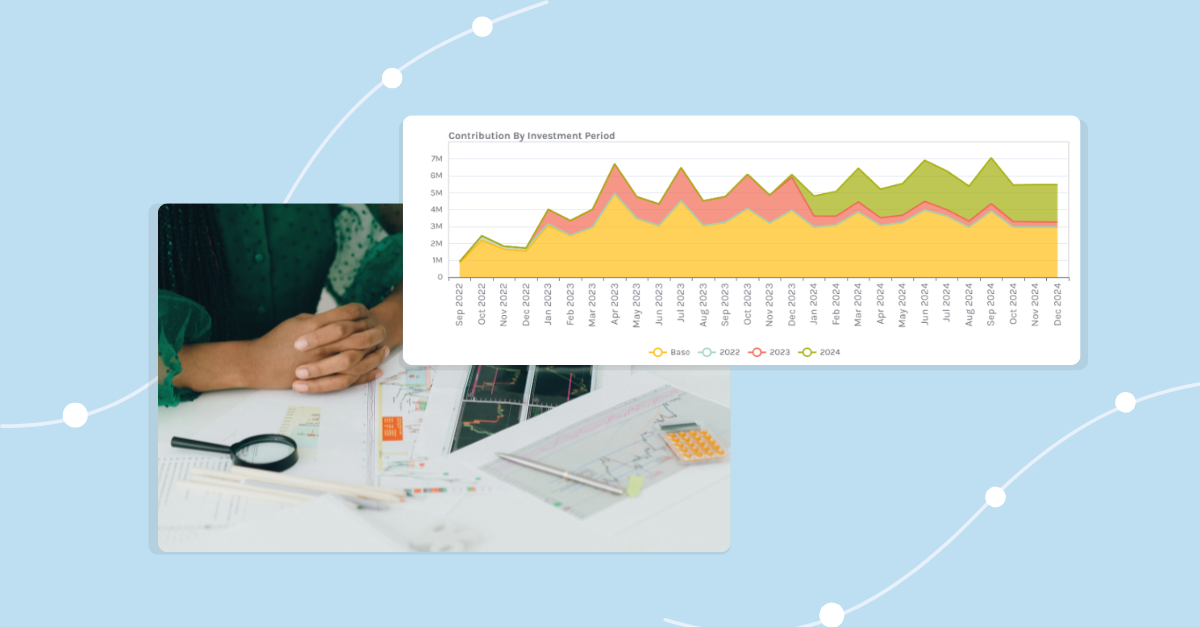Modern marketing is messy: too many channels, too many tools, and too little time. That’s why marketing automation matters.
It helps you scale personalized experiences without scaling your team. Instead of juggling manual follow-ups, ad triggers, and campaign timing, automation handles the execution, so you can focus on strategy.
More importantly, if you’re not using data to tailor buyers’ experience in real time, someone else is. Digital marketing automation turns scattered engagement into structured journeys, making your campaigns more efficient and your conversions more consistent.
Bottom line: automation doesn’t just save time. It keeps you competitive.
Key highlights:
- Marketing automation is the process of using tools to run personalized, behavior-based campaigns across different channels.
- Common marketing automation uses include lead nurturing, cart recovery, onboarding, win-back flows, and loyalty offers, driven by real-time user data.
- Most teams build their tech stack with specialized marketing automation tools (email, CRM, CDP, analytics) and rely on features like segmentation, personalization, and multi-channel support.
- AI enhances automation by predicting user behavior, optimizing timing and content. With AI-powered tools like Keen, cross-media measurement and smarter budget allocation become available, as well.
What is marketing automation?
Marketing automation is the use of software to automatically run repetitive marketing tasks like email campaigns, lead nurturing, customer segmentation, and ad targeting.
Automated marketing tools trigger personalized interactions based on user behavior, timing, and data. The result is more efficient and better targeting across the customer journey and integrated cross-channel media.
7 benefits of marketing automation
Done right, automation in marketing can be a revenue driver. Here’s what you stand to gain from automating your marketing tasks:
- Better lead nurturing: Automatically guide prospects through the funnel with relevant content, so you’re always following up (without manually chasing leads).
- Scalable and effective marketing personalization: Create tailored experiences for 10,000 contacts as easily as you would for 10.
- Higher conversion rates: Timely, behavior-based outreach improves your odds of reaching the right person with the right message.
- Consistent messaging across channels: Unified marketing becomes easier when every touchpoint is on-brand and in sync.
- More time for marketing and media planning strategy: Free up your team from repetitive tasks so they can focus on high-impact work like creative, testing, and analysis.
- Trackable ROI and mROI: Most marketing automation software has built-in analytics, so you can measure what’s working and where to optimize.
- Improved customer experience: In a report by Ascend2, 43% of marketers said the most important benefit of marketing automation is improving the customer experience. Automated personalization and timely follow-ups make customers feel understood and valued, which in turn boosts satisfaction, loyalty, and retention.
How does marketing automation work?
Marketing automation works by connecting your data, defining rules, and triggering actions based on customer behavior in real time. Automated marketing campaigns typically follow this five-step sequence:
- A user takes an action or matches a condition: You pre-define the action or condition, which could range from filling out a form to clicking an email or visiting your pricing page. Your automation system tracks and logs these actions.
- The automation system identifies a trigger: Based on the user’s action, marketing automation platforms check if that action matches any pre-set trigger, such as “Downloaded ebook X” or “Inactive for 30 days.”
- A workflow is activated: The marketing automation workflow kicks in once a trigger is matched. This is a pre-built sequence of automated actions, such as sending an email, updating a contact record, assigning a lead to sales, or launching an ad retargeting campaign.
- Personalized content is delivered: The system uses your segmentation rules and dynamic content fields to customize the message, adjusting the content based on what you know about the user.
- The system tracks responses and adapts: Every interaction (opens, clicks, conversions) is recorded. Some marketing automation software even uses that data to adjust future sends, like changing timing, frequency, or content for better results.
To make the marketing automation process clearer, let’s take an example:
- A user signs up for a webinar
- The workflow triggers a confirmation email
- The system adds the user to a nurture track
- Follow-ups are sent based on whether users attend the webinar or not
- The tool alerts the sales team if the user downloads more content
6 innovative marketing automation uses
Marketing automation isn’t just for email. It automatically powers full-funnel optimization, customer journeys, and lead lifecycles. Use these six high-impact marketing automation uses as inspiration:
1. Lead nurture email sequence (B2B)
When someone downloads a gated asset like an ebook or report:
- The marketing automation system sends a thank-you email right away
- A few days later, the email sequence is followed by a relevant case study
- Then the automation tool routes the lead to sales if the user engages with the emails
Trigger: Form submission
Channel: Email
Automation type: Behavioral + time delay
2. Abandoned cart recovery (ecommerce)
If a shopper adds items to their cart but doesn’t check out:
- They receive a reminder email with the product information
- If the email is unopened, the system sends a discount offer 48 hours later
- A final SMS nudges the shopper before inventory runs out
Trigger: Cart abandonment
Channels: Email, SMS
Automation type: Behavioral
3. Customer onboarding workflow (SaaS or product-led)
After a user signs up for a free trial:
- They get a welcome message with key setup steps
- The system sends feature tips based on activity
- If inactive after 7 days, it prompts support to nudge the user back
Trigger: Signup or inactivity
Channels: Email, in-app
Automation type: Event-based + usage-based
4. Win-back campaign (customer lifecycle model)
For users who haven’t opened emails or purchased in 60+ days:
- A re-engagement campaign sends tailored content
- A follow-up offer sweetens the deal
- If still inactive, the user is suppressed (kept in your system but excluded from future campaigns) or removed entirely from the list
Trigger: Inactivity
Channels: Email, retargeting
Automation type: Time-based
5. Event follow-up and sales alerts (B2B lead capture)
Post-webinar:
- Attendees get the slides and bonus content
- High-intent leads (for example, those who asked questions) are flagged
- Sales team is notified automatically to follow up
Trigger: Event attendance
Channels: Email, internal notifications
Automation type: CRM-integrated
6. Birthday or milestone-based offers (B2C retail)
For customers in a loyalty or subscription program:
- On their birthday, they get a personalized email with a discount or freebie
- On their 1-year anniversary, the system sends a thank-you with an upsell offer
- The messaging is updated based on loyalty tier or past purchase behavior
Trigger: Date-based milestone (birthday, anniversary)
Channels: Email, SMS, mobile app
Automation type: Attribute-based + time-based
Best marketing automation tools and features to know
There’s no shortage of marketing automation tools, but no all-in-one solution does everything equally well. And that’s okay. Most teams use a combination of marketing automation software tailored to their goals: email workflows, customer data management, analytics, or campaign optimization.
Types of marketing automation software
Think of your AI-powered marketing tools stack in layers:
| Marketing automation tool type | Best for | Platform examples |
| Email automation | Nurture flows, newsletters, and list segmentation | Mailchimp, ActiveCampaign |
| CRM-based automation | Sales and marketing alignment | HubSpot, Salesforce Marketing Cloud |
| CDPs and orchestration platforms | Enterprise-scale customer journeys | Segment, Adobe Experience Platform |
| Analytics and performance layers | Marketing planning, sales forecasting, and optimization | Keen, GA4, Tableau |
Note: These tools often work best when integrated, not all-in-one.
Must-have features of marketing automation software
Your tools don’t have to do everything, but together, your stack should enable smarter targeting, faster execution, and measurable growth. That’s what a modern marketing automation platform is really about. The platform (or mix of platforms) should offer features like:
- Multi-channel support: Ability to engage customers across email, SMS, ads, web, mobile, or chat.
- Visual workflow builder: Design journeys with logic-based branching and triggers.
- Behavioral and demographic segmentation: Target users based on real-time actions or customer attributes.
- Personalization and dynamic content: Show the right message to the right person based on context and data.
- Integration capabilities: Seamless connection with your CRM, CMS, ad platforms, analytics tools, and ecommerce systems.
- Analytics and reporting: Track campaign performance, marketing attribution, and ROI from first touch to final conversion.
- Scalability: Your automation setup should grow with your database, team size, and campaign complexity.
Read more: Marketing optimization software: A buyer’s guide
Best practices and common mistakes in marketing automation
When automated marketing works, it feels seamless. When it doesn’t, it’s painfully obvious: irrelevant emails, broken workflows, missed follow-ups. Follow this quick guide on marketing automation best practices and common mistakes to avoid:
| Marketing automation best practices | Common marketing automation mistakes |
| Start with a clear goal for each workflow | Automating just for the sake of it |
| Map the customer journey before building | Skipping strategy and jumping into tools |
| Use real behavioral triggers, not just lists | Sending generic blasts to everyone without segmentation |
| Keep workflows simple and testable | Overcomplicating flows with too many branches |
| Align with sales, success, and product teams | Creating siloed automation with no handoffs |
| Monitor and optimize regularly | Following a “set it and forget it” strategy |
| Personalize using data, not assumptions | Assuming one-size-fits-all messaging works |
The role of AI in marketing automation
Traditional marketing automation ran on rules: “If X happens, do Y.” But with AI marketing automation, those rules evolve based on real-time behavior, outcomes, and data patterns.
Here’s how AI adds value to your automation tools:
- Smarter lead scoring: Instead of assigning points manually, AI models rank leads based on likelihood to convert using historical and behavioral data.
- Send time optimization: AI analyzes when each user is most likely to open or click, and adjusts delivery times automatically.
- Dynamic content and recommendations: From product suggestions to subject lines, AI can tailor content based on individual behavior, not just segments.
- Next-best-action modeling: Predict what someone’s most likely to do next and trigger personalized follow-ups to move them forward.
AI marketing automation doesn’t mean handing over full control. Most marketers still prefer a hybrid approach, where AI powers the execution, but humans guide the strategy. In fact, 72% of marketing leaders trust AI to optimize their marketing activities, as long as there’s some human oversight, according to Adobe’s State of Marketing Automation report.
For example, Keen’s marketing mix modeling platform uses AI and machine learning to forecast channel performance and identify where your media dollars will have the most incremental impact. Here’s an example of the different types of plans you can create:

The Keen platform layers marketing predictive analytics and channel insights on top of automation, allowing teams to make data-backed decisions before campaigns launch, not after.
Scale your marketing automation impact with Keen
Marketing automation helps you move faster. But moving fast in the wrong direction? That’s just wasted budget.
To get real results, you need more than triggered emails and scheduled workflows. You need a system that helps you decide what to automate, where to invest, and how to understand your cross-media measurement.
That’s where Keen’s AI-powered marketing measurement comes in. We’re not an email automation platform or CRM. We’re the intelligence layer that sits on top of your stack—integrating with your media, web, and automation tools to model what’s working, forecast what will, and guide your next move.
By pairing Keen’s predictive planning and performance measurement with your existing automation workflows, your team can:
- Run more efficient cross-channel optimization campaigns
- Allocate spend where it drives the most marketing incrementality value
Use whatever marketing automation tools you want. We work with them. Keen’s marketplace offers more than 275 integrations. And if you don’t find yours on the list, just put in your request.
Ready to make your marketing automation work? Request a demo or a free trial to see how Keen can power better planning behind every marketing campaign automation.
Frequently asked questions
What is a marketing automation platform?
A marketing automation platform is software that helps you run and scale campaigns without manual execution. Instead of hand-scheduling emails, retargeting ads, or CRM updates, the platform does it for you, based on real-time user behavior.
How can I maximize the impact of a marketing automation tool?
You can maximize the impact of your automation tools not by doing anything “more,” but rather by focusing on what works. To get the most out of your automation system:
- Use data to prioritize: Look at the full customer lifecycle and find the biggest drop-off points. Automate recovery there first.
- Go multi-channel early: If your automation only covers email or digital media, you’re losing money. Look at retargeting, SMS, in-app, and paid media triggers.
- Align with business goals: Tie each workflow to revenue, retention, or lifecycle movement. If it’s not driving a meaningful performance metric, it’s just noise.
- Build feedback loops: Connect your automation tool with analytics platforms (like Keen) to understand downstream impact and optimize your marketing spend based on real results.
How does marketing automation affect the customer journey?
Marketing automation improves the customer journey when done correctly. It makes the user experience smoother with:
- Relevant content: Automation tools pull from behavioral and demographic data, so each customer gets messages tailored to what they’ve done (or haven’t done). No more sending “get started” emails to paying users.
- Faster responses: Customers get what they need right away, whether that’s a confirmation email, a follow-up, or support content.
- Consistency in omnichannel marketing: Artificial intelligence can align the message across different channels, whether email, social, SMS, or on-site, to keep the customer journey smooth.
- Timely nudges: Leads don’t fall through the cracks when the system follows up while your team focuses on strategy.
What hurts the journey isn’t automation; it’s lazy automation. If you’re thoughtful about your triggers, timing, and messaging, you’ll make the experience feel smarter, not colder.
How do I implement a marketing automation strategy?
Once you have your marketing plan in place, use this practical step-by-step approach to implement automation:
- Align with your goals: Based on your marketing objectives, understand the pressing needs. Are you nurturing leads, driving repeat purchases, or improving onboarding? Don’t automate anything until the objective is clear.
- Map your customer journey: Identify key actions, drop-off points, and opportunities for engagement across the funnel.
- Pick the right tools: Choose marketing automation platforms that fit your use case, not just the biggest name. Think email, CRM, CDP, analytics, and more.
- Segment your audience: Group contacts based on behavior, lifecycle stage, or attributes. Segmentation is the foundation of personalization.
- Build simple, testable workflows: Start small, like a three-step lead nurture or a cart abandonment sequence. Expand once the basics are working.
- Personalize your messaging: Use dynamic fields, behavioral triggers, and content variations.
- Set up marketing automation success metrics: Define KPIs upfront. Track engagement, conversions, and downstream revenue impact (especially if using tools like Keen).
- Optimize your strategy over time: No workflow is perfect from day one. Analyze results, A/B test variations, and refine as you go.
What are the most common reasons marketing automation fails?
Even the best software can fall short without the right strategy, data, or foundation. Most automation efforts fail because of:
- Lack of top-of-funnel demand: Marketing automation can’t fix an empty pipeline. Without a steady stream of new leads, even the smartest nurture flows stall out.
- Poor data hygiene: Bad or missing data means irrelevant messages, broken logic, and awkward customer experiences.
- No ongoing optimization: Static workflows go stale. Automation needs regular reviews, testing, and iteration to stay effective.
- No plan for AI change management: As automation platforms adopt more AI-driven logic, teams need clear workflows, governance, and oversight. Without thoughtful change management, AI risks becoming a black box, making automation harder to scale, trust, or adjust.
What are some “bad” vs “good” marketing automation examples?
Bad automation in marketing is generic, clunky, and annoying. On the other hand, good automation is relevant, timely, and user-focused.
| Component | Bad marketing automation example | Good marketing automation example |
| Automation approach | Generic follow-up after content download | Tailored nurture sequence |
| User activity | Downloaded a whitepaper on beginner SEO tactics | Downloaded the same whitepaper on beginner SEO tactics |
| Automation workflow | Immediately receives an email pushing a high-tier enterprise product demo without context or nurturing. | Receives a thank-you email with beginner tips. The email is followed by relevant case studies and tool guides over two weeks. The user is then flagged for sales after multiple engagements. |
| Result | Confusion and low engagement | Informed lead, warmer handoff, higher close rate |





